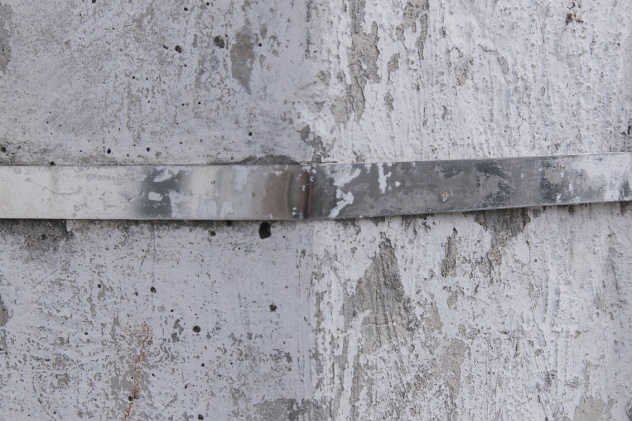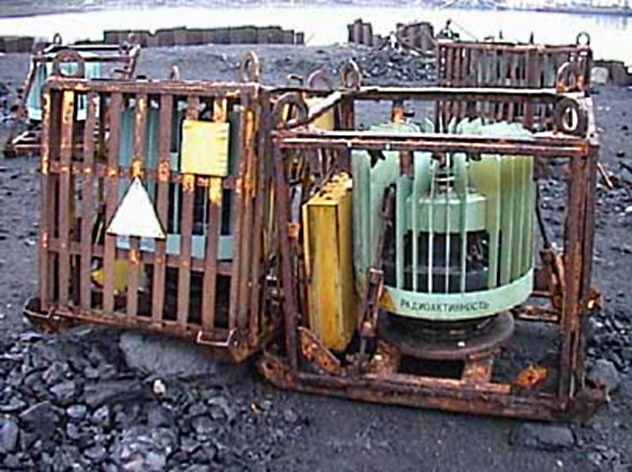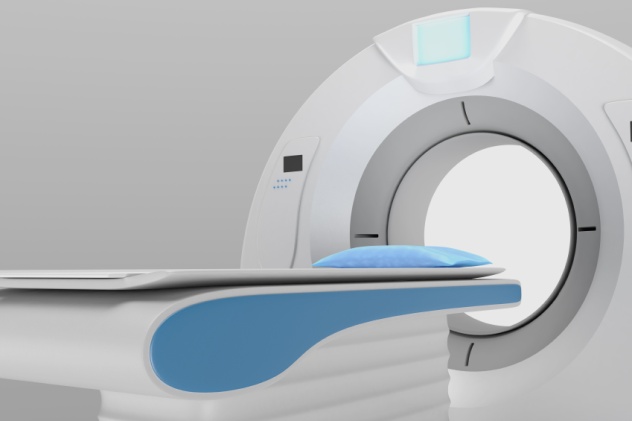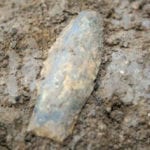 Weird Stuff
Weird Stuff  Weird Stuff
Weird Stuff  Mysteries
Mysteries 10 Tragic Disappearances and Deaths in Joshua Tree National Park
 History
History 10 Ways Childhood Really Sucked in the Old West
 Music
Music 10 Name Origins of Famous Bands from the 1990s
 Religion
Religion 10 Biggest Turnarounds by the Catholic Church
 Weird Stuff
Weird Stuff 10 Unbelievable Times Laws Had Unintended Consequences
 Humans
Humans Ten Historic Women Who Deserve Way More Credit Than They Got
 Movies and TV
Movies and TV 10 Films That Spawned Major Lawsuits
 History
History Ten Times Towns Were Wiped Off the Face of the Earth
 Creepy
Creepy 10 of the Most Disturbingly Haunted Public Houses in the UK
 Weird Stuff
Weird Stuff 10 Niche Subcultures That Are More Popular Than You Might Think
 Mysteries
Mysteries 10 Tragic Disappearances and Deaths in Joshua Tree National Park
 History
History 10 Ways Childhood Really Sucked in the Old West
Who's Behind Listverse?

Jamie Frater
Head Editor
Jamie founded Listverse due to an insatiable desire to share fascinating, obscure, and bizarre facts. He has been a guest speaker on numerous national radio and television stations and is a five time published author.
More About Us Music
Music 10 Name Origins of Famous Bands from the 1990s
 Religion
Religion 10 Biggest Turnarounds by the Catholic Church
 Weird Stuff
Weird Stuff 10 Unbelievable Times Laws Had Unintended Consequences
 Humans
Humans Ten Historic Women Who Deserve Way More Credit Than They Got
 Movies and TV
Movies and TV 10 Films That Spawned Major Lawsuits
 History
History Ten Times Towns Were Wiped Off the Face of the Earth
 Creepy
Creepy 10 of the Most Disturbingly Haunted Public Houses in the UK
10 Modern Radiation Accidents Involving Civilians
Harnessing atomic power is one of mankind’s greatest achievements. Nuclear energy is one of the cleanest, most efficient forms energy available to us today, and radiation therapy allows us to fight cancer and other diseases that we’d otherwise be powerless against.
Nevertheless, we’d be wise not to let our guard down when dealing with radiation. Sure, you’ve heard of Chernobyl and Fukushima, but as long as you’re not near a nuclear power plant, you probably don’t need to worry about being accidentally irradiated . . . right? Not necessarily.
Here are 10 radiation accidents that you probably haven’t heard of. They all happened within the last 30 years, and some of them might have been right in your own backyard.
10 Therac-25 Machines
1985–1987
The Therac-25 was a radiotherapy machine produced by Atomic Energy of Canada Limited (AECL) in 1985. Five machines were shipped to the US, and six were used in Canada. The machines were involved in six accidents between 1985 and 1987, and three patients died from radiation poisoning.
Therac-25 machines worked by firing a beam of radiation at a certain cancer-afflicted body part. When the beam fired, several components were in its path. Most important among these was a flattening filter, which spread the high-powered beam over a larger area and reduced its power.
In their previous machines, the Therac-6 and the Therac-20, AECL had installed a hardware lock that prevented the machine from firing the beam without rotating the filter into place. However, in the Therac-25, this safety measure had been replaced by a software lock. There was no physical “lock”—only software that, supposedly, would prevent the machine from firing incorrectly. Of course, this software had a peculiar bug: Simply put, typing a command too fast could freeze the software lock, and the beam would without the filter in place, delivering a full dose of radiation directly to the patient.
How big of a dose? In one case in Marietta, Georgia, a patient who should have received a dose of around 200 rads instead received an estimated 15,000–20,000 rads. To make matters worse, operators were used to the machines freezing up and delivering errors. A report on the case reads, “Therac-25 operators had become accustomed to frequent malfunctions that had no untoward consequences for the patient.” Additionally, instead of registering that it had fired an intense dose of radiation, the screen read “no dose.”
Patients reported the radiation as feeling like “an intense electric shock” and “an intense force of heat . . . this red-hot sensation.” Because the unfiltered beam delivered potentially lethal doses, only three of the six patients survived.
9 Kramatorsk, Ukraine
1989

If you’re listing places where you wouldn’t want radioactive material to wind up, “lodged in a concrete block directly above a child’s bed” should probably be high on the list. As unbelievable as it sounds, that’s exactly what happened to the residents of Building 7 on Gvardeytsiv Kantemirovtsiv Street in Kramatorsk, Ukraine, in 1989.
Two families inhabited Apartment 85 between 1980 and 1989. In the first family, the mother and two children died of leukemia. As for the second family, the eldest son died, and another fell seriously ill. Authorities only discovered the source when the residents requested that someone come in and test their building for radiation.
It turned out that a capsule of cesium-137 had lodged in a concrete wall panel between two apartments. Cesium-137 is typically used in radioisotope process monitoring devices, and it seems that the source slipped out of the device and lodged in the raw materials that were later used to manufacture the wall. How on Earth this happened has never been explained.
The report on this matter attempts to reassure the reader: “It should be noted that source accountancy and control measures have by now been significantly strengthened in Ukraine.” It further notes that raw materials are now effectively monitored for radiation.
8 Kwale District, Kenya
1999

In southeastern Kenya, the government decided to save money by making repairs to a dirt road using materials from the nearby Mrima Hill. It was cheaper than hauling rock from a quarry 19 kilometers (12 mi) away. That sounds like an excellent cost-cutting measure, right? So what was the problem?
Mrima Hill was studied and found to be dangerously radioactive eight years before, and reports were sent to all relevant government authorities, according to the author of the study, geophysicist Jayanti Patel. “I sent copies personally to all the relevant ministries,” he said. “Sedimentary rock from the hill should not be used for either building homes or road constructions.”
The hill, which in some locations emits 50 times the radiation that scientists would consider safe, contains actinium, uranium, potassium-40, and of most concern to local health—thorium. Locals claim that there have been mysterious deaths for years and have been concerned about contamination from the nearby hill. They say that measures are essentially too little, too late.
The government was tasked with monitoring the health of some 25,000 people who were exposed to low levels of radiation, removing 2,795 tons of material that had been used for road repairs, and declaring the toxic hill a protected area. However, with the infrastructure in rural Kenya being somewhat lacking, it’s unlikely that locals have received the medical care needed or that all the toxic material was safely removed.
7 Northwestern Georgia
2001

On Christmas Eve 2001, the International Atomic Energy Agency (IAEA) Emergency Response Center received a call from the nation of Georgia. Three woodcutters had been trekking through the remote mountains near the Abkhazian border when they came across two mysteriously warm containers. Viewing this as a stroke of luck, rather than something questionable, they used the objects as “personal heaters” as they slept in the woods overnight.
After about three hours, they developed nausea, headaches, dizziness, and began vomiting. The woodcutters were hospitalized, and a few days later, they developed large burns on their skin. Although their burns were severe and some became infected, they apparently all made a full recovery. Hopefully, they learned some lessons about staying away from strangely warm abandoned materials.
The IAEA trekked out into the woods and soon located the sources—discarded Soviet radioisotope thermoelectric generators (RTGs) (dilapidated examples pictured above), which had been removed from their protective shielding. Each contained strontium-90. RTGs convert the heat generated by radioactive isotopes into electricity and are used in satellites, space probes, and other unmanned vehicles or facilities. It is unknown where these particular generators came from.
RTGs are so dangerous that the IAEA disposal team for this particular incident consisted of 25 people, each of whom were exposed to just 40 seconds’ worth of radiation as they moved the generators into secure, lead-lined drums.
6 Bialystok, Poland
2001

On February 27, 2001, during a radiotherapy session for a breast cancer patient in Bialystok, Poland, the Bialystok Oncology Centre lost power, including to its NEPTUN 10P radiotherapy machine. After power was restarted and the machine checked, the therapy session restarted. Four additional patients were treated by the machine. All were receiving treatment for post-surgical breast cancer.
Following their treatment, the patients reported itching and burning at the treatment site. The staff halted the use of the NEPTUN 10P and examined it. After measuring the dose output, it appeared that the machine was giving off significantly higher doses of radiation than appropriate. Further examination revealed that the dose monitoring system of the machine was not working properly, and an electrical component of the safety system was damaged.
The clinic had indeed performed the correct checks during their restart of the machine as stated in its instructional manual, but dosimetry testing was not required after an emergency power shutoff. Furthermore, a report stated that:
Machine shut-offs due to power cuts had happened many times in the past. The AC mains voltage in the hospital area was quite unstable and as many as two power cuts a day had occurred occasionally. The experience of the radiation technologist with previous power cuts indicated that, after resuming operation, the machine performed normally, i.e. without any change in its beam parameters.
All five patients had serious injuries and underwent surgery and received skin grafts as a result, though none of their injuries were fatal. The attending doctor was charged with criminal negligence, though the courts found that she was not responsible. The hospital was fined.
5 Glasgow
2006

Lisa Norris was a 15-year-old Scottish teenager diagnosed with brain cancer. She was prescribed a course of radiation therapy at the Beatson Oncology Center in Glasgow, Scotland.
Beatson used a module called Eclipse, which is part of a computer system named Varis, as its computer treatment planning system. In May 2005, the Varis system was upgraded to Varis 7, which involved allowing certain pieces of data involving treatment plans to be transferred electronically to other sections of the database. However, for the most complex treatment plans, Beatson continued to use paper forms.
Changing to this new system meant that if a specific feature was selected by the treatment planning team, it changed the data in the treatment plan relative to other reports. This feature was selected in Lisa Norris’s file. However, the person who transcribed the data from the digital treatment plan to the paper forms was unaware of the difference and therefore did not change the data. The result was that the figure entered on the paper form for one of the “critical treatment delivery parameters” was significantly higher than what should have been used.
How much higher? Between January 5 and January 31, Norris received doses of radiation that were about 58 percent greater than intended. The bare skin of her head reddened and blistered, and her parents reported that when she attempted to take a cold shower, the water evaporated off her skin “as if you had put water in a hot pan, you could see it going to bubbles.”
Lisa sadly died on October 18, 2006. An official inquiry concluded that she had passed from her tumor, not from radiation overdoses.
4 Arcata, California
2008

On January 23, 2008, Jacoby Roth’s parents took their two-year-old son to the ER at Mad River Hospital in Arcata, California, after he complained of neck pain after having fallen out of bed the night before. He seemed fine, but his doctors ordered a CT scan just in case, in order to check his cervical spine. A normal CT scan should only last a couple of minutes, with around 25 pictures being taken. Jacoby’s test was only stopped after his parents complained. He had been scanned 151 times in the same area, and the test had lasted 61 minutes.
Surprisingly, it doesn’t appear that the machine malfunctioned at all. (It was replaced shortly after the incident, but that had already been scheduled happen.) The machine had been in manual mode when Jacoby’s test took place, meaning that the operator would had to have hit the button to take a picture each time—151 times.
The operator, Raven Knickerbocker, had received her radiological technologist license in December 2000. She left Mad River Hospital two weeks after the incident, and her license was suspended on September 30, 2008. She changed her story several times, alternatively claiming that she only hit the button four to six times, that the boy’s parents distracted her, that the scanning table wouldn’t move correctly, and that the boy’s father was leaning on the table. A state investigator concluded that even if any of those statements were true, she should have stopped the test.
The Roths filed suit against Knickerbocker and settled, though the terms were kept secret. The hospital was fined $25,000, but the fine was dismissed on appeal, possibly because this case was solely due to operator error. Jacoby Roth seems happy and healthy, but an examination of his blood shows severe chromosomal damage, and one expert claims that he will likely develop cataracts in the future.
3 Rio De Janeiro
2011

In October 2011, at The Venerable Hospital of the Third Order of St. Francis of Penance in Rio De Janeiro, Brazil, a seven-year-old girl named Maria Eduarda was being treated for acute lymphoblastic leukemia, a rare cancer most commonly found in children. She was first diagnosed in 2010 and had completed a course of chemotherapy, but doctors soon prescribed radiotherapy as well.
Shortly after Maria began the radiation sessions, her parents grew concerned, as they saw burns appear on her skin. Though they reported this to Maria’s doctor, their concerns were dismissed, since such burns were a common side effect of treatment.
The injuries to Maria’s head, including her scalp and ears, grew worse. The girl soon started to show signs of brain damage, including difficulty speaking and walking. Maria was finally diagnosed with cutaneous radiation syndrome—in other words, the radiation burns on her skin. The radiation had also begun to affect her brain, and she was diagnosed with frontal lobe necrosis. Maria passed away in June 2012.
In Maria’s case, the error was not with the machine, but in calculating the number of radiotherapy sessions she was to receive. A processing error resulted in Maria being exposed to a full dose of radiation in each of her eight sessions of radiotherapy. The physician responsible as well as two technicians were charged with manslaughter.
2 Asos Belts2013

If radioactive material shouldn’t be buried in our walls, then it definitely shouldn’t be wrapped around our torsos. As crazy as it sounds, that’s exactly what happened in January 2013, when vigilant US Border Patrol agents discovered radioactive material in a shipment of studded belts made by fashion retailer Asos. Specifically, the metal studs on the belts had been made from radioactive material.
Asos recalled the products, which had been sold across 14 different nations, and commissioned an internal report. The report comfortingly concluded, “Unfortunately, this incident is quite a common occurrence,” since manufacturers in India and the Far East use scrap metal for their products. When scavengers look for scrap metal, they sometimes come across “orphaned” radioactive sources, which have been forgotten or abandoned by authorities instead of being properly and safely disposed of. If a radioactive source and other raw materials are melted together at the same time, the radioactivity becomes trapped in the resulting metal alloy.
The belts, which contained 750–800 metal studs, could have been dangerous if worn for over 500 hours, or 20 days of continuous wear. It was alleged that Haq International, a company in India, supplied Asos with 641 radioactive belts, though Asos uses several different suppliers, and Haq International disputes the claims.
Asos said that it contacted all of the customers who purchased the product, and it appears that they were safely recalled.
1 Tepojaco, Mexico
2013
A white Volkswagen Worker truck transporting a radioactive cobalt-60 teletherapy source from a hospital to a radioactive waste storage center was hijacked at a gas station in Tepojaco, Mexico, on December 2, 2013. The driver was forced out of the vehicle at gunpoint and tied up. The IAEA released a statement saying, “At the time the truck was stolen, the source was properly shielded. However, the source could be extremely dangerous to a person if removed from the shielding, or if it was damaged.”
The truck was eventually found near the town of Hueypoxtla, around 2.3 kilometers (1.4 mi) from where it had been stolen. Of course, the protective casing around the source had been broken, and the highly radioactive cobalt-60 was removed, though it was abandoned nearby. Officials warned that whoever had opened the material would likely die due from exposure to the deadly radiation. They warned that they thieves would have to go to a hospital, and with their unique symptoms, they would be easily identified. However, no further information on the case was available. Presumably, the thieves were never found.
Hannah is a freelance writer, skydiver, and slave to an adorable cat. A proud Jersey girl with a background in political science, criminal justice, and car sales, she can be reached for commissions and other information at [email protected]. You can read more of her work at morbidstreak.blogspot.com.








